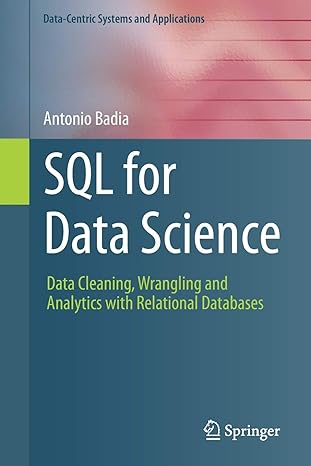Question
Game theory with Java Craps Dice games have been around since the dawn of man. Craps is a derivative of an old English game called
Game theory with Java
Craps
Dice games have been around since the dawn of man. Craps is a derivative of an old English game called hazard. What is todays game was brought to New Orleans in the 1800s and gained popularity quickly.
NOTE: Our labs will delve into games of chance. Typically, when games of chance are played, wagering is involved. The labs will not focus on this aspect of the game, just the mechanics of the game itself. Im not going to teach you how to wager, odds, payout, etc.
The game itself is very easy to learn. One shooter (person throwing the dice) is picked from a group of willing players. The shooter will continue to shoot until the shooter shoots a seven-out. The dice are passed to the left, and another shooter takes their turn.
The shooter rolls the initial roll, or come out roll. The sum of the dice will make one of the following combinations:
| Sum of Dice | Result |
| 2, 3, 12 | Craps |
| 7, 11 | Natural |
| 4, 5, 6, 8, 9, 10 | Point |
If a craps or natural is thrown, the round is over. If a point is thrown, the shooter is then trying on successive throws to match the same point. If the shooter throws a seven, the round is over. This is called a seven-out. If the shooter throws the point, the round is over- the player wins the round. Any other roll (not point, not seven), the player continues to throw. In theory, a single round of craps can last forever.
For example, the trials below:
| Trial | Throws | Outcome |
| 7 | 1 | Natural |
| 11 | 1 | Natural |
| 2 | 1 | Craps |
| 3 | 1 | Craps |
| 12 | 1 | Craps |
| 6-8-6 | 3 | Point / Win |
| 6-8-7 | 3 | Seven-out / Loss |
| 6-2-11-6 | 3 | Point / Win |
| 6-11-6 | 3 | Point / Win |
| 4-2-2-2-2-2-2-2-2-4 | 10 | Point / Win |
| 4-2-2-2-2-2-2-2-2-2-7 | 11 | Seven-out / Loss |
The probability for one trial is pretty easy to calculate. Consider that the summation of probability is 1, every combination of the dice (there are 36) must sum to 1.
| Outcome | # of possibilities | Probability |
| Natural (7 or 11) | 8 | 0.22222 |
| Craps (2, 3, 12) | 4 | 0.11111 |
| Point (4, 5, 6, 8, 9, 10) | 24 | 0.66667 |
Assuming the each die is weighted so the throws are at random (1 to 6 are randomly thrown), the odds of calculating hitting a point can be tricky. As Ive said before, in theory, the shooter can continue forever (if they dont hit the point or seven-out).
Statistically, the probability of x happening before y can be represented with the following equation:
X = Probability of seven-out
Y = Probability of rolling your point
n = Number of trials
If you learn nothing else from statistics, learn this The Law of Large Numbers. In simple terms, this means that as the number of trials approaches infinity, the result of the trials will closely math theoretical probabilities. If you toss a quarter in the air one million times, the results will be very close to 500,000 heads, 500,000 tails. At infinity, its exactly half.
How to complete the lab:
Im giving you a running start I gave you the scaffold of a working Java project. The project has the proper classes and contains zero errors.
Clone the following lab: https://github.com/CISC181/Lab1
Youll have to change Die, Roll and Round class. Finish the code.
Start with Die. Search for the //TODO: comments
After Die, fix the Roll class
After Roll, fix the Round class.
Finish the unit tests for Die, Roll, and Round.
Here is what I have so far
Die class
----------------------------------------------------------------------------------------------------------------------------------------------------------
package pkgCore;
public class Die {
private int DieValue;
public Die() {
// TODO: Determine DieVaue.. a random number between 1 and 6
this.DieValue =(byte) ((byte) ((Math.random() * 6)+1) + ((Math.random() * 6)+1));
}
public int getDieValue() {
return DieValue;
}
}
Roll Class
--------------------------------------------------------------------------------------------------------------------------------------------------------------
package pkgCore;
public class Roll {
private Die d1;
private Die d2;
private int Score;
public Roll() {
// TODO: Create an instance of d1 and d2...
// TODO: Determine 'Score'
d1 = new Die();
d2 = new Die();
Score = (byte) ((byte) d1.getDieValue() + d2.getDieValue());
}
public int getScore() {
return Score;
}
}
Round Class
-------------------------------------------------------------------------------------------------------------------------------------------------
package pkgCore;
import java.util.LinkedList;
public class Round {
private int ComeOutScore;
private eGameResult eGameResult;
private LinkedList
public Round() {
// TODO: Execute Come Out roll, value ComeOutScore
// TODO: Create a loop that will execute a roll until point is made, or
// seven-out
// TODO: value the eGameResult after the round is complete
}
public int RollCount() {
// Return the roll count
return 0;
}
}
Step by Step Solution
There are 3 Steps involved in it
Step: 1

Get Instant Access to Expert-Tailored Solutions
See step-by-step solutions with expert insights and AI powered tools for academic success
Step: 2

Step: 3

Ace Your Homework with AI
Get the answers you need in no time with our AI-driven, step-by-step assistance
Get Started


